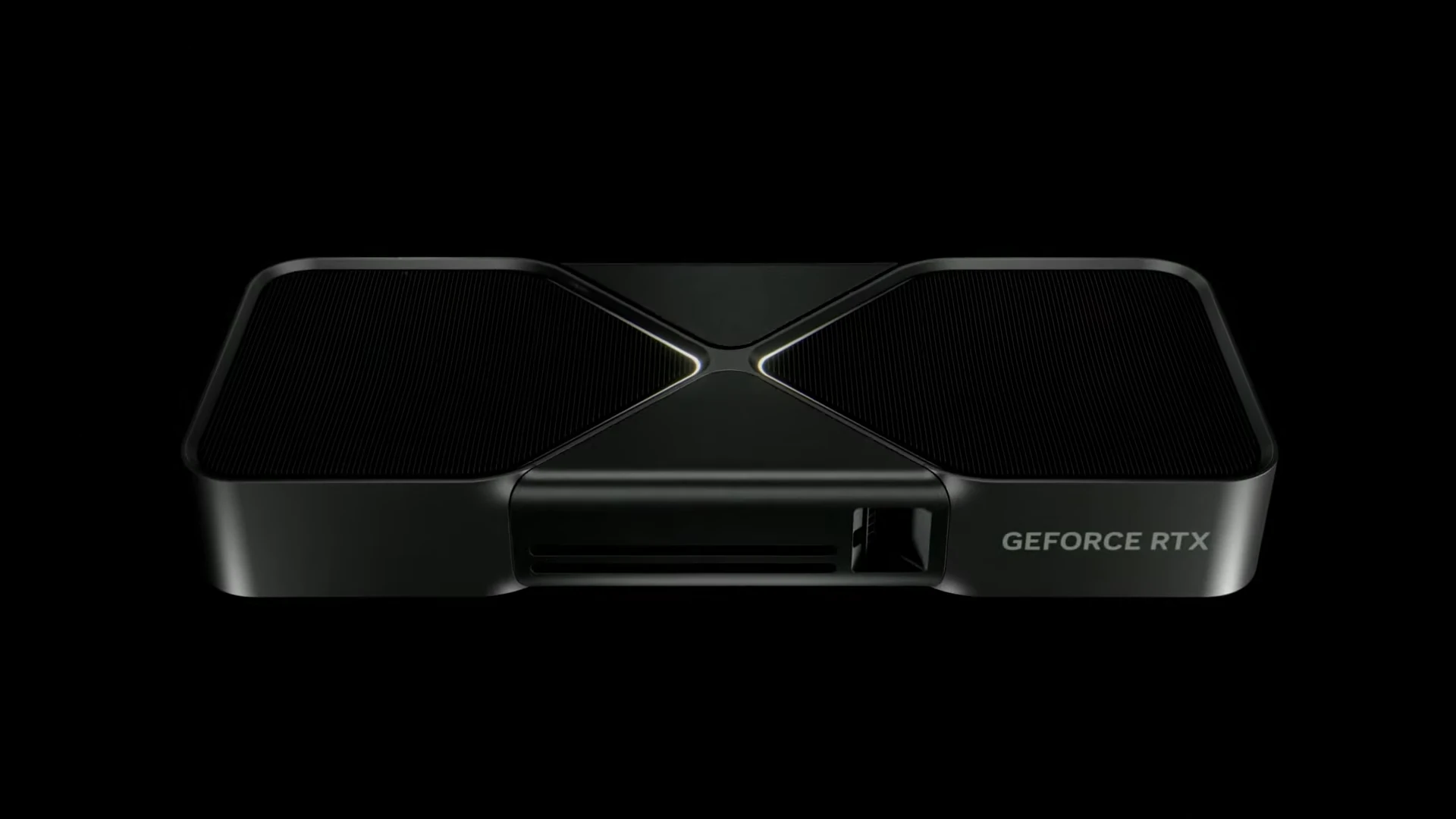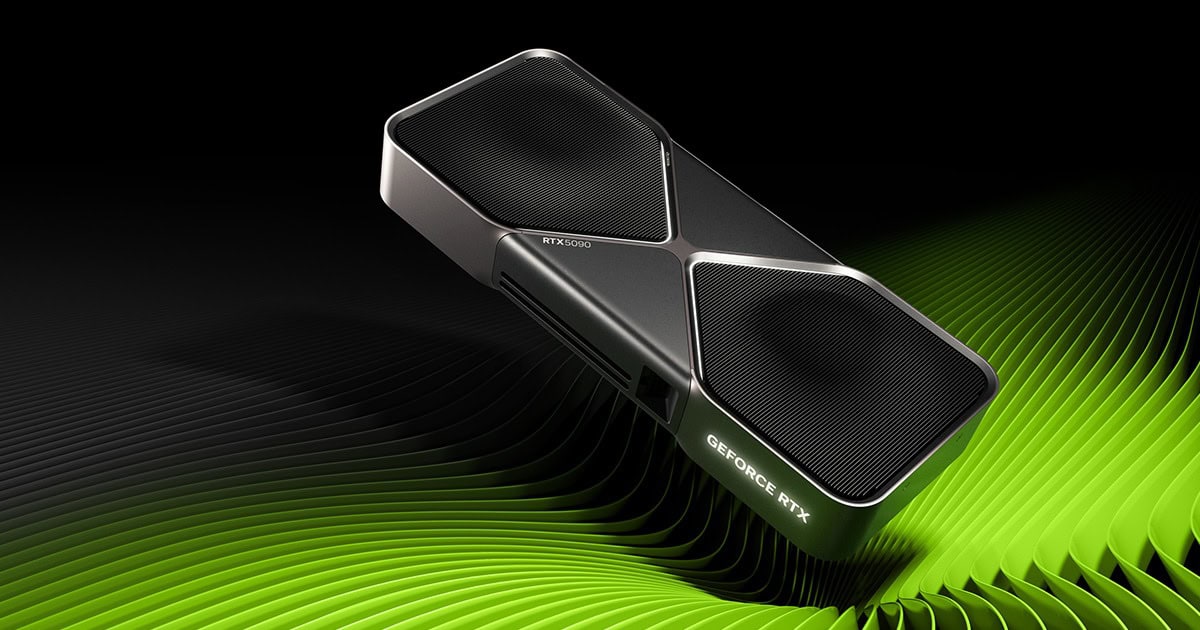The Nvidia RTX 5090 and RTX 5080 have garnered attention for their innovative features, particularly in terms of cache specifications. Both models maintain the same L1 cache capacity per streaming multiprocessor as their predecessors, the RTX 4090 and 4080. However, the RTX 5090 stands out with a significant increase in L2 cache, surpassing the RTX 4090 by 36%. This boost is paired with a larger SM count, offering enhanced performance capabilities.

The introduction of GDDR7 memory modules across the RTX 50-series further elevates the performance standards, providing gamers and professionals alike with faster data transfer rates. Despite minimal cache improvements, these GPUs are engineered to deliver exceptional performance in high-demand scenarios such as 4K gaming and advanced 3D rendering tasks. These enhancements place the RTX 5090 and 5080 at the forefront of modern graphics technology.
Comparing Nvidia’s RTX 50 Series and 40 Series Memory
Understanding GPU Memory and Cache
Graphics cards use memory and cache to store and access data quickly. This is crucial for smooth gaming and other demanding tasks. Faster memory and larger caches can lead to better performance. Let’s look at how Nvidia’s latest and current generation GPUs compare.
RTX 5090 vs. RTX 4090 Memory and Cache
The RTX 5090 is expected to bring some big changes in memory and cache. Here’s a comparison with the RTX 4090:
| Feature | RTX 5090 | RTX 4090 |
|---|---|---|
| L1 Cache | 21.7 MB | 128 KB per SM |
| L2 Cache | 98.3 MB | 72 MB |
| Memory Size | 32 GB GDDR7 | 24 GB GDDR6X |
| Memory Interface | 512-bit | 384-bit |
The RTX 5090 will have a much larger L2 cache and use GDDR7 memory. GDDR7 is faster than GDDR6X, which is used in the RTX 4090. This means the RTX 5090 should have more memory bandwidth. The L1 cache change is also notable.
RTX 5080 vs. RTX 4080 Memory and Cache
Here’s how the RTX 5080 compares to the RTX 4080:
| Feature | RTX 5080 | RTX 4080 |
|---|---|---|
| L1 Cache | 10.7 MB | 128 KB per SM |
| L2 Cache | 65 MB | 64 MB |
| Memory Size | 16 GB GDDR7 | 16 GB GDDR6X |
| Memory Interface | 256-bit | 256-bit |
The RTX 5080 will use GDDR7 memory. Its L2 cache is slightly larger than the RTX 4080’s. The move to GDDR7 will likely provide a good performance boost.
Why Cache and Memory Matter
Cache and memory are important for GPU performance. The cache stores frequently used data for quick access. Larger caches can reduce the need to access the slower main memory. Faster memory, like GDDR7, allows the GPU to move data more quickly. These improvements can lead to higher frame rates in games and faster rendering times in other applications.
What This Means for Gamers and Creators
The RTX 50 series will offer significant improvements in memory and cache. This could mean better performance at higher resolutions and with demanding games. Creators who work with large files or complex scenes may also see big benefits.
Considering Power Consumption
While performance is important, power consumption is also a factor. More powerful GPUs often use more power. It will be interesting to see how Nvidia balances performance and power efficiency with the RTX 50 series.
Beyond Gaming: AI and Professional Use
The improvements in memory and cache in the RTX 50 series are not just for gamers. These changes can also help with AI tasks and professional applications. Faster memory and larger caches can speed up machine learning training and other compute-intensive workloads.
Memory Bandwidth and Its Impact
Memory bandwidth is how much data the GPU can move to and from its memory per second. GDDR7 offers a big increase in bandwidth compared to GDDR6X. This higher bandwidth can make a big difference in performance, especially at higher resolutions like 4K. More bandwidth helps reduce bottlenecks that can slow down performance.
The graphics card market is constantly changing. New technologies and improvements come out all the time. It is important to stay up to date on the latest news and trends in graphics processing. This helps you make smart decisions when buying or upgrading your computer hardware.
The introduction of PCI Express 5.0 also plays a role in overall system performance. While current GPUs don’t fully saturate the bandwidth of PCIe 4.0, the newer standard provides headroom for future growth and can improve performance in certain scenarios, especially when combined with faster memory technologies like GDDR7. This means that systems with PCIe 5.0 motherboards will be better positioned to take advantage of the increased bandwidth offered by the latest GPUs.
Key Takeaways
- Upgraded L2 cache enhances RTX 5090 performance.
- Speedy GDDR7 memory boosts RTX 50-series capabilities.
- RTX 5090 leads in performance due to higher SM count.
Keep Up with the Latest Tech: Subscribe to the Tom’s Hardware Update
The landscape of PC gaming is evolving, with Nvidia at the forefront of GPU innovation. Anticipation for the RTX 50 series is building, fueled by rumors of significant performance enhancements due to upgrades in memory technology and cache architecture.
The article will compare the rumored specifications of the RTX 50 series, including models like the 5080, to the current RTX 40 series. It will highlight the importance of memory and cache in GPU performance and discuss the implications of these advancements for gamers, content creators, and professionals, helping users make informed hardware investment decisions.
For those passionate about technology, subscribing to Tom’s Hardware provides a comprehensive resource. The newsletter delivers the latest news and detailed reviews directly, ensuring you stay informed about emerging technologies like the RTX 50 series. The RTX 5090 comes equipped with a 512-bit memory bus, enhancing memory performance significantly over its predecessor, the RTX 4090. Meanwhile, the RTX 5070 Ti boasts a 256-bit bus, a step up from previous models. Notably, the RTX 5080 and RTX 5070 maintain their established bus widths, providing consistency for users familiar with earlier versions.
Common Queries
What Are the Differences in L1 Cache Sizes for NVIDIA RTX 5090 and RTX 5080 Compared to RTX 4090 and 4080?
The next-generation graphics cards, the RTX 5090 and RTX 5080, have been noted for maintaining the same L1 cache size per Streaming Multiprocessor (SM) as the earlier models, the RTX 4090 and 4080. This implies that there is no increase in L1 cache size per SM across these models.
How Does Having the Same L1 Cache Size Per SM Impact the Performance of the RTX 5090 and 5080 Compared to the RTX 4090 and 4080?
Having an identical L1 cache size per SM for the RTX 5090 and 5080 as seen in the RTX 4090 and 4080 means that improvements in performance are likely driven by other factors. These factors may include enhancements in architecture, clock speeds, and power efficiency rather than changes in L1 cache size.
Are There Any Major Architectural Variations Between the RTX 5090/5080 and the RTX 4090/4080 Apart from L1 Cache Size?
The primary architectural changes between these series might not be reflected in L1 cache size per se. The RTX 5090 and 5080 potentially feature advancements in core architecture, AI capabilities, and ray tracing efficiency. These improvements contribute to a more efficient and powerful graphics processing system.
What Impact Does the Size of L1 Cache Have on Graphics Processing Abilities in the Latest NVIDIA RTX Series?
The size of L1 cache plays a critical role in reducing latency and enhancing bandwidth for frequently accessed data. This can optimize tasks such as texture filtering and quick data retrieval, improving the smoothness of real-time rendering and complex computation tasks.
Can Users Notice Improved Processing Efficiency with the RTX 5090 and 5080 Given They Share the Same L1 Cache Size as the RTX 4090 and 4080?
Users may notice improved processing efficiency in the RTX 5090 and 5080 due to other advancements beyond L1 cache size. Architectural changes, higher core counts, and improved AI integration might contribute to noticeable performance gains even if cache size remains unchanged.
When Would the L1 Cache Size Per SM Become a Limiting Factor in GPU Performance in the RTX Lineup?
In scenarios demanding intensive data processing and high bandwidth, especially where larger data sets and complex textures are involved, the L1 cache size per SM could become a bottleneck. Applications like high-resolution gaming and advanced computing tasks that require rapid data access might expose these limitations in certain circumstances.







